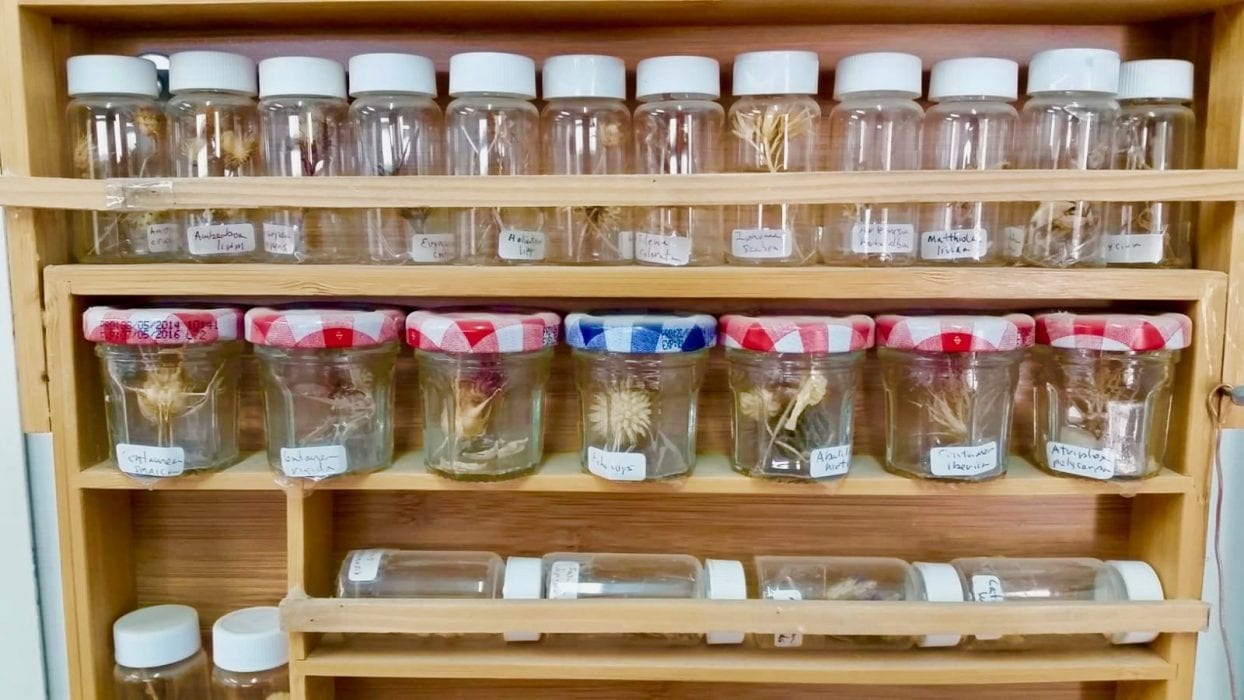Some people believe that CRISPR, a low-cost tool used in gene editing, is the devil. The concerns aren’t unfounded. What if a newly “edited” grain or plant or animal escapes from its cage and changes the face of the wild genome in question?
Should we, for instance, edit out disease in human populations? Or ADHD? What if we do, and those edits bring a cascade of other problems we couldn’t have predicted. A Chinese doctor He Jiankui went to jail in 2019 for editing a human gene that creates HIV-immunity in embryos and then implanted them in women who did not know this fact.
But what about gene editing for food as climate change puts a strain on water? GMOs or gene-edited plants do exist. And while naturalists don’t want to eat them, science can use gene editing tools, like CRISPR to reverse engineer and discover information they need while selecting beneficial traits from a wild population. That’s what is happening now in a study between American and Israeli researchers. They are using gene editing tools to pinpoint climate resistant genes in wheat.
When it comes to agriculture to grow climate-tolerant plants, current regulation in most Western countries does not permit genetic enhancement through artificial intervention designed to change the gene expression. A new study from UC Davis and the University of Haifa, attempts to use gene editing in a responsible manner to help pinpoint resilient genes in ancient cultivars of wild wheat.
In a recent study the group used gene editing and hydroponics to pinpoint which genes are responsible for long roots. Long-rooted wheat can search for water and minerals better in the wild and is a more ideal gene trait if seed bank researchers want to produce seeds from wild varieties that are climate resilient.
“This is the first time that a gene associated with drought tolerance has been discovered and its function is validated in wheat,” said Gilad Gabay, the first author of an article published in the prestigious journal Nature Communications. “Given the importance of wheat for global nutrition, on the one hand, and the fact that global warming is leading to an expansion of arid areas and impairing agricultural crops, on the other, this discovery is highly significant and will allow wheat to be grown in a wider range of climatic conditions,” he added.
The roots of ancient farming
There is an established theory that farming started with the emmer wheat in the area around Israel, Jordan and Lebanon fifteen thousand years ago. As seed banks start to proliferate around the Middle East, and younger generations turn to farming, new ideas are formulating. Consider the bread maker Haguy Ben Yehuda north of Tel Aviv who discovered an emmer wheat variety he is now baking into bread.

Haguy Ben Yehuda making emmer wheat into bread
One of the largest wild wheat seed banks in the world is at the University of Haifa has been looking at how they can select the best cultivars from ancient grains. Tamar Krugman says: “Our gene bank includes thousands of strains of wild wheat from Israel and around the world.”

A seed bank at the Arava Institute in Israel
She and her colleagues at UC Davis applied gene editing technologies to help them identify a cluster of genes that make long-rooted wheat in the hope that they can replicate those seeds and use them in the future to grow hearty wheat in drought conditions. Climate change is expected to make some parts of the Middle East uninhabitable. See climate exodus, Middle East.
Details about the wheat study
In the first stage of the study, the researchers identified wheat cultivars in which significant difference were found in the field in yield production (over 2,000 kg per hectare) and in the plant biomass. However, what caught their attention was the fact that these differences were larger in arid conditions. In the second stage, tests in wheat fields and by using hydroponic methods found that these gaps in yield were due to differences in the root lengths.
In the third stage, the researchers used advanced genomics and bioinformatics tools to identify the genomic region that may include genes associated with the root architecture in wheat plants. This identification is considered extremely complex, since bread wheat has an enormous genome – over five times the human genome – that includes three distinct sub-genomes that include six copies of very chromosome.
In the final stage, the researchers managed to validate the function of the genes in the development of roots through the use of pioneering genome editing and genetic engineering techniques in wheat research developed recently at the laboratory of Dr. Jorge Dubcovsky.

